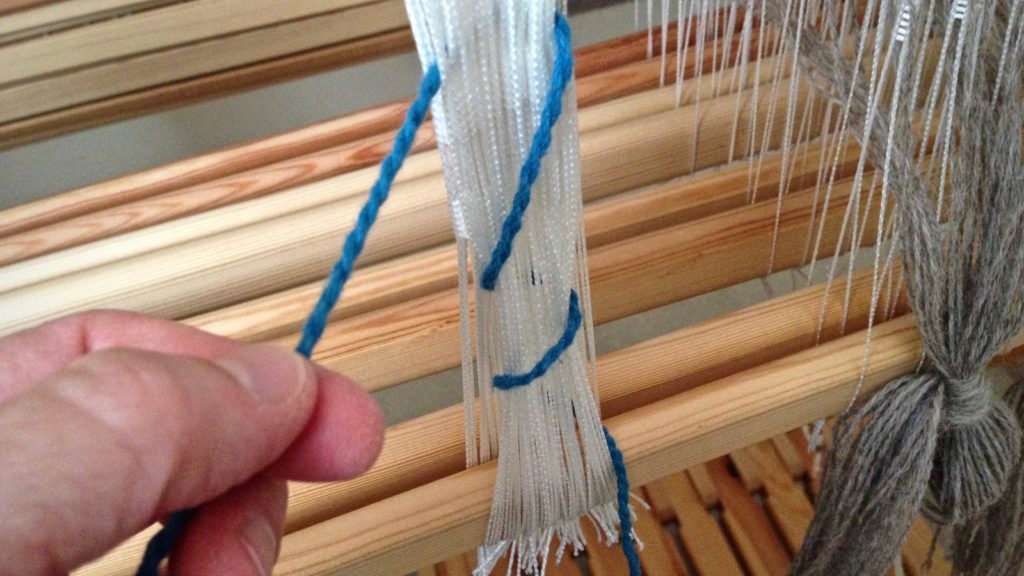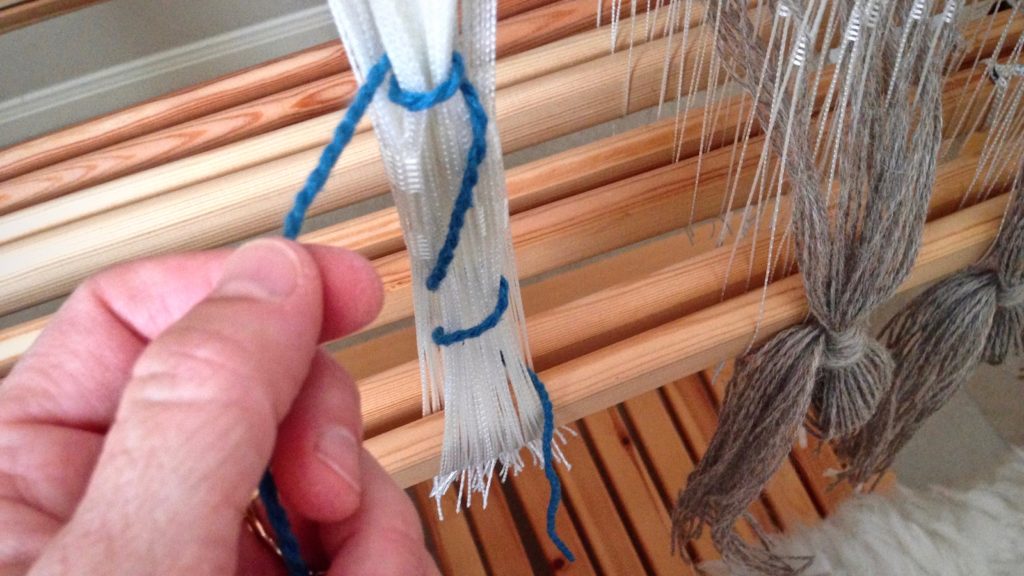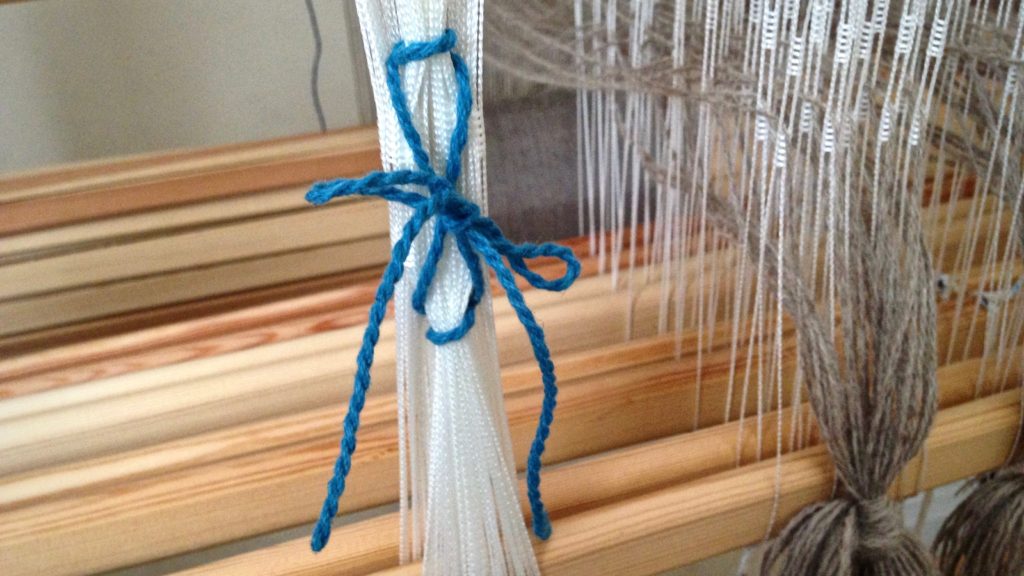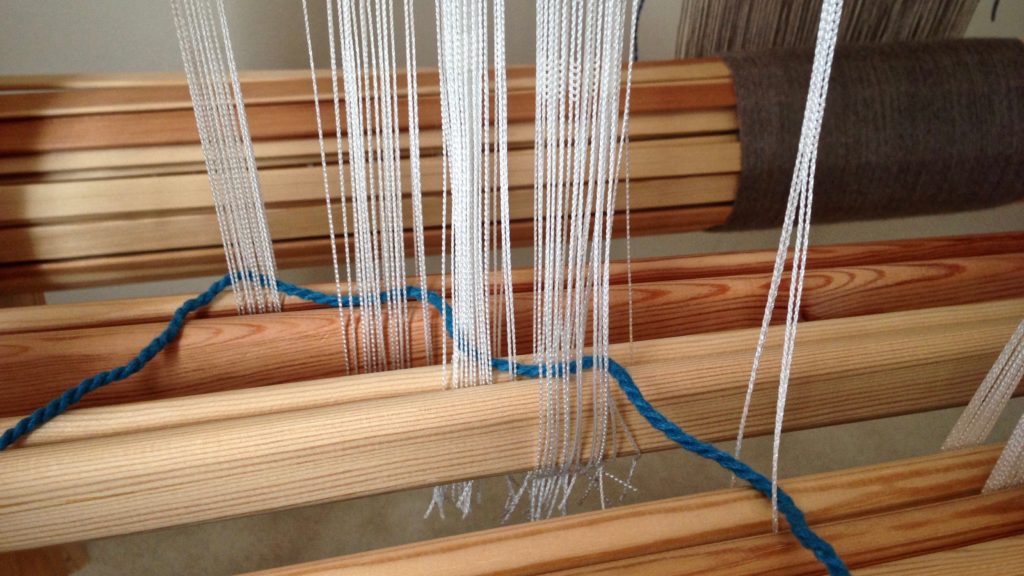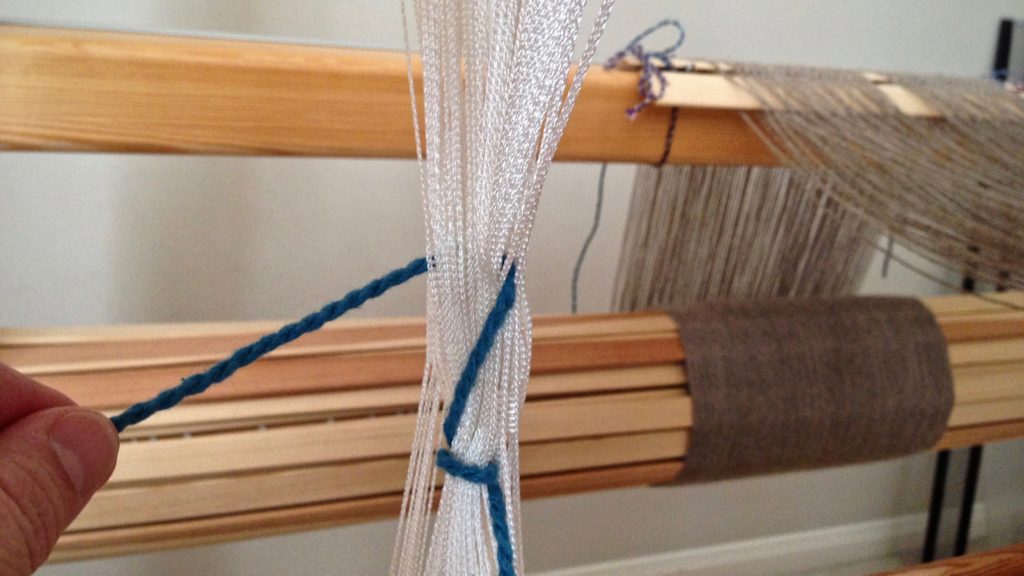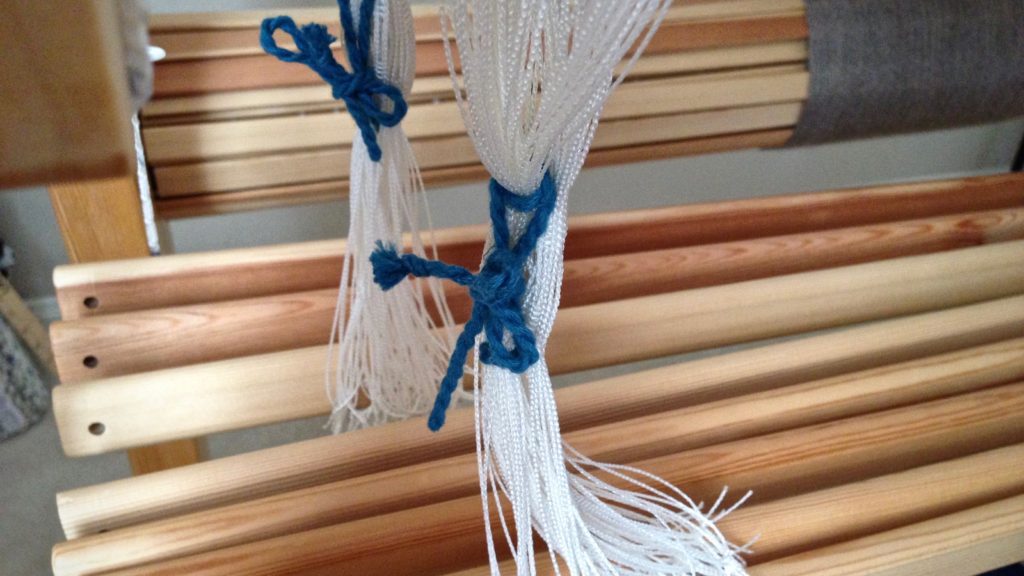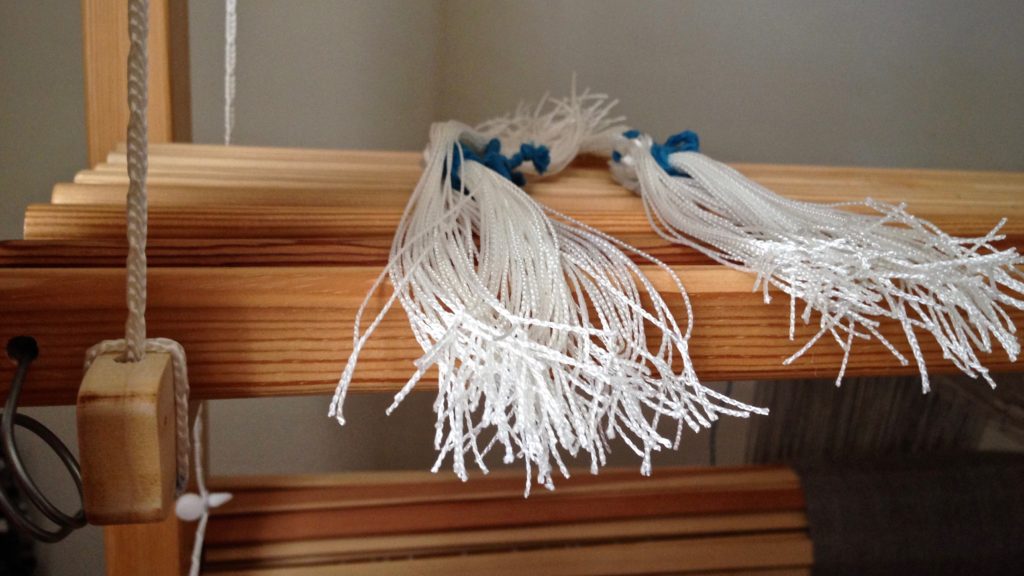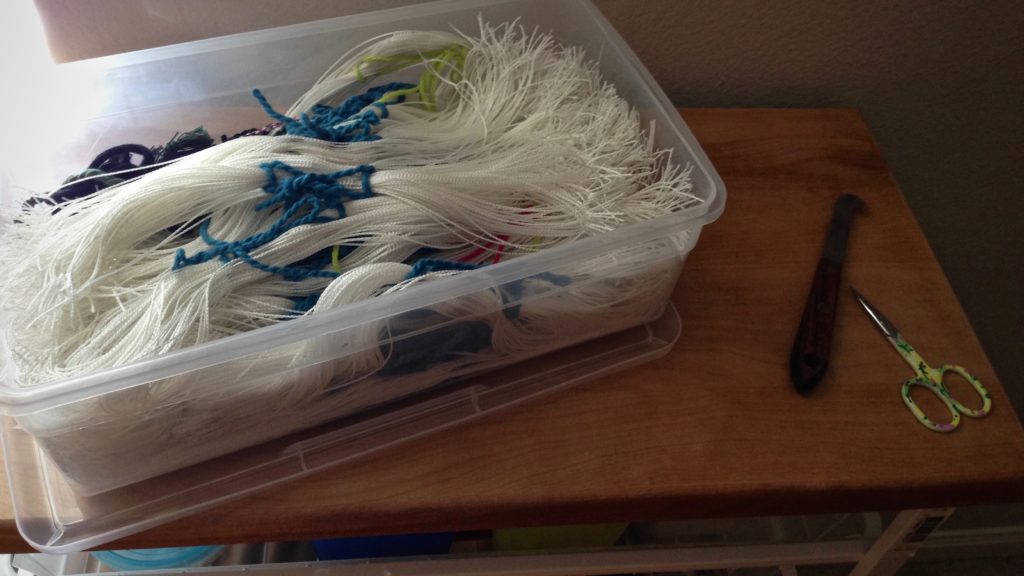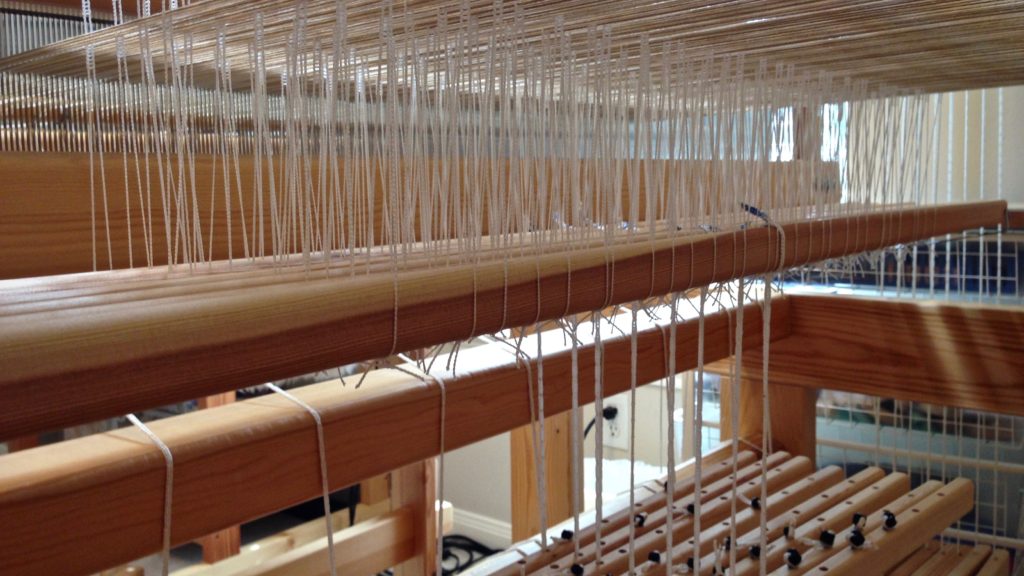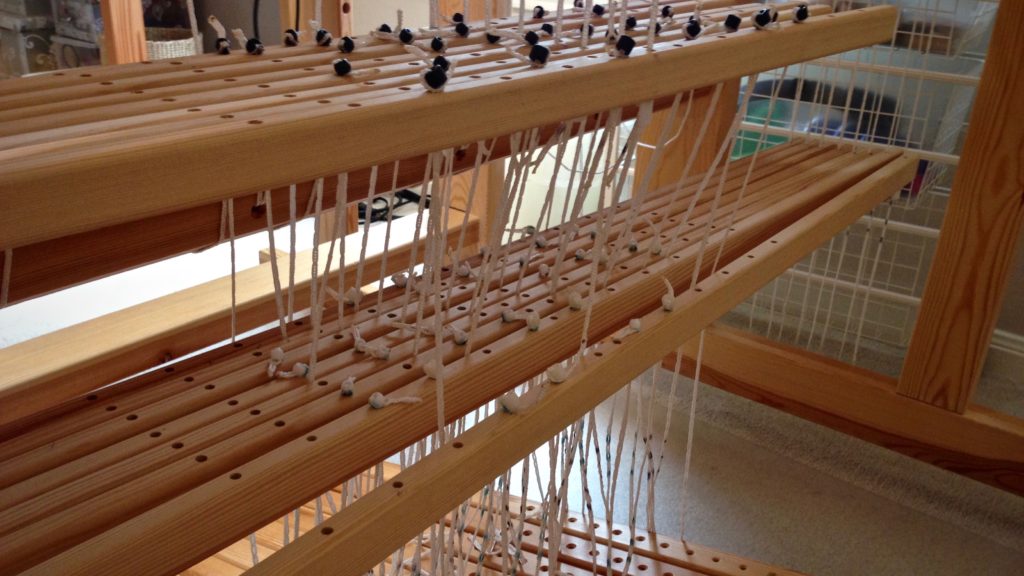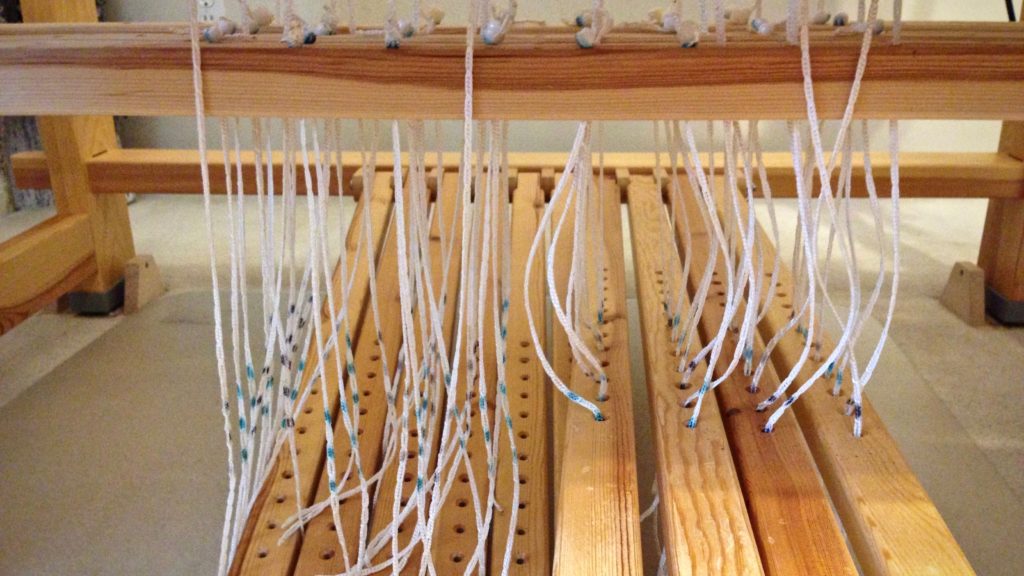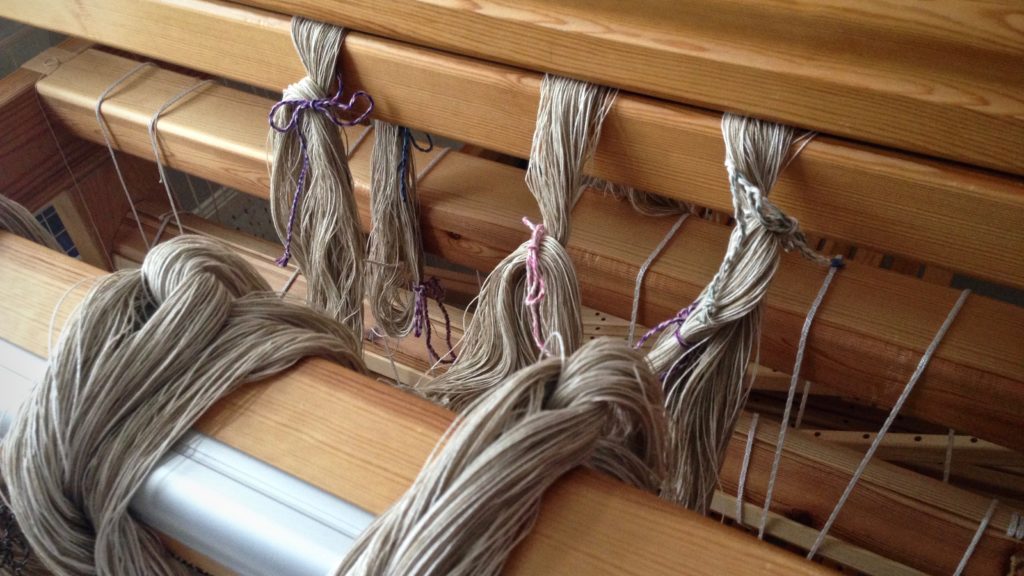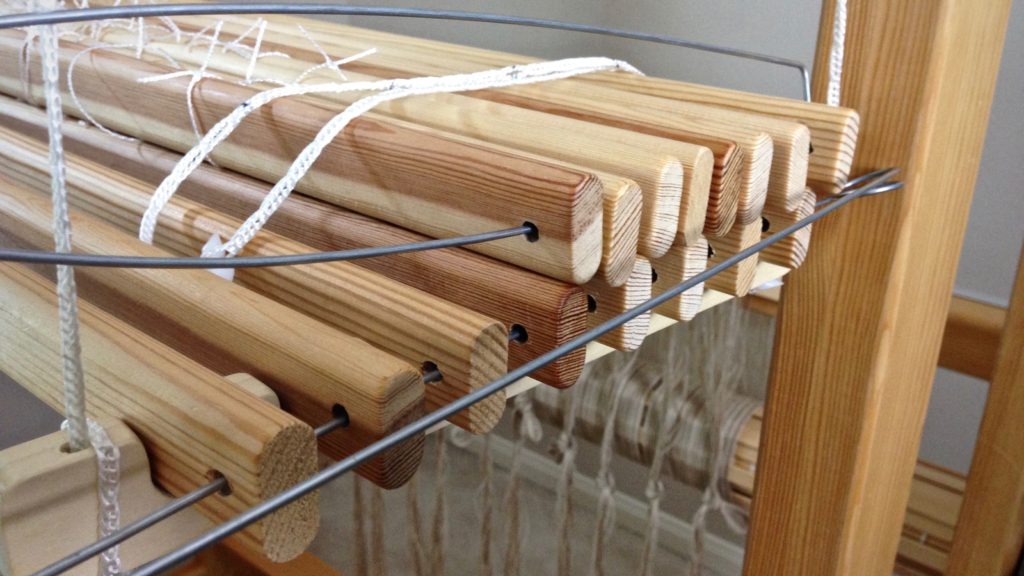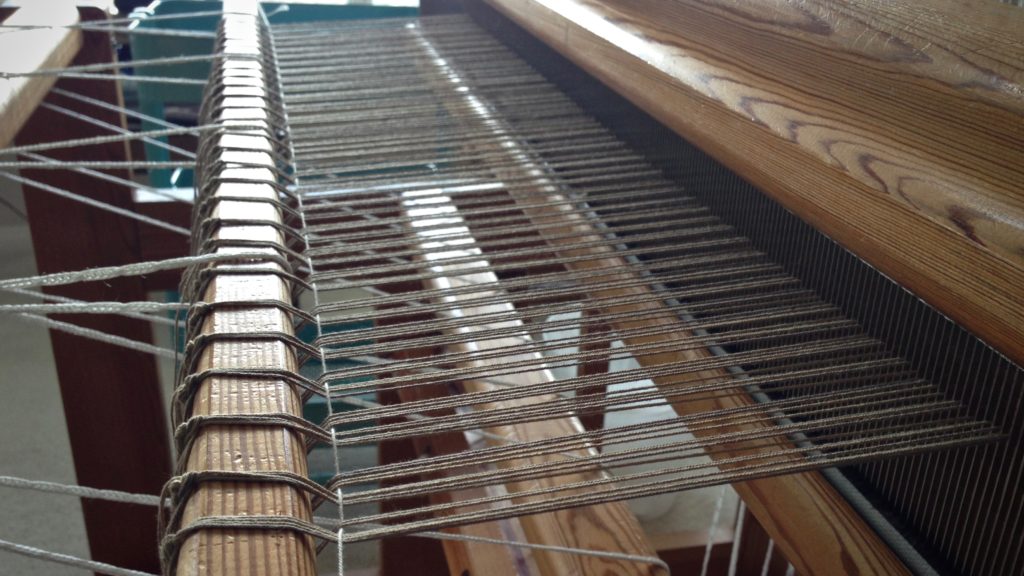The great thing about Texsolv heddles is that they are easy to move around. If you know how to tie them together, it is simple to add heddles, remove heddles, or switch heddles to different shafts. When I’m getting ready to thread the loom, I get my box of bundled heddles and put it on the cart right beside the loom. Then, I can easily add heddles if needed. And when threading is finished, I tie any unused heddles into bundles and put them in the heddle box, ready for the next project.
Tie Texsolv Heddle Bundles on One Shaft
- Step 1 Take a cord (I use my choke tie cords) through the heddles below the heddle eyes.
- Step 2 Wrap the cord one time around, below the heddle eyes.
- Step 3 Cross diagonally up with the cord, and take the cord through the heddles above the heddle eyes.
- Step 4 Wrap the cord one time around, above the heddle eyes.
- Step 5 Join the two ends of the cord with a bow knot.
Tie Texsolv Heddle Bundles on More than One Shaft
- Step 1 Take the cord through the heddles below the heddle eyes, right to left, one shaft at a time, front shaft to back shaft.
- Step 2 Take the end of the cord from the back shaft, and wrap the cord around one time through the heddles, below the heddle eyes, right to left, one shaft at a time, front shaft to back shaft.
- Step 3 Cross diagonally up with the cord, and take the cord through the heddles above the heddle eyes, from right to left, one shaft at a time, front shaft to back shaft.
- Steps 4 & 5 Wrap the cord one time around, above the heddle eyes, from right to left, one shaft at a time, front shaft to back shaft. Join the two ends of the cord with a bow knot.
Remove Heddles from Shafts
- Step 1 Remove shaft pin from the lower shafts, and slip the bottom of the heddles off the shafts. Replace the shaft pin.
- Step 2 Remove shaft pin from the upper shafts, and slip the top of the heddles off the shafts. Replace the shaft pin.
- Step 3 Place tied heddle bundles in the heddle box. Put the box away, ready for the next project.
May you always have enough heddles when and where you need them.
Loom dressing,
Karen




